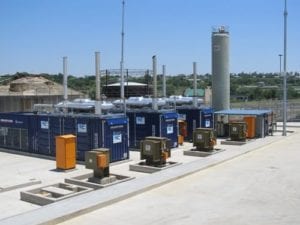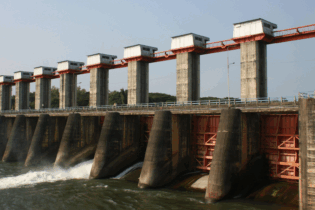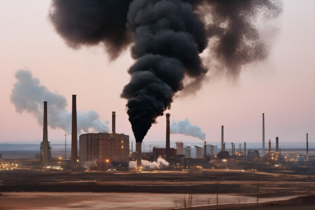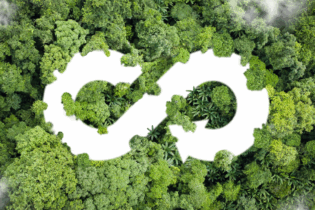The conversion of biogas to power is rapidly growing in stature across the globe. In some countries biogas is used to power vehicles, but the most common application is of biogas-to-electricity.
There are numerous environmental benefits of this technology. Biogas is an effective, renewable, non-fossil fuel with a high methane content that does not compound the greenhouse effect. Furthermore, emissions of nitrogen oxides, carbon oxide, carbon monoxides and hydrocarbons are small in comparison to petrol and diesel. Biogas is an energy rich fuel and can be used to produce heat and power, and can also be used as vehicle fuel. Compared to the use of diesel for vehicles, biogas emits 80% less hydrocarbons and 60% less nitrogen oxides. The concentration of particles and dust is also negligible in when biogas is burned. Animal and food waste and sewage sludge undergo natural anaerobic digestion in an oxygen-free environment. This means that all animal and human waste can be broken down by a bacterial process. The remaining products of the anaerobic digestion are returned to nature, so biogas is included in the category of renewable energy sources. In short, as long as humans and animals exist on the planet, biogas will go on being produced. The source of biogas can therefore be described as unlimited. As a source of power it is classified as non-polluting. Wastewater professionals once accepted the high costs of operating wastewater treatment facilities as a consequence of meeting their discharge permit requirements. As the cost of energy rises and emphasis on renewable energy increases, local authorities and municipalities are seeing solutions that save money and meet renewable requirements. Waste treatment processes include energy-intensive operations such as aeration and pumping. As a result, wastewater treatment works (WWTW) require significant energy consumption. As electrical prices increase, plant operators are facing higher energy costs in order to meet discharge permit requirements. The second leading expense to WWTW owners is the cost of energy, secondonly to personnel. For plants that employ anaerobic digestion for biosolids treatment, the process of combusting digester gas to produce electricity and heat through cogeneration/combined heat and power (CHP) may provide a solution to rising operational costs. WEC Energy, a division of WEC Projects, is pleased to announce that its biogas combined heat and power (CHP) generation plant at a WWTW in Gauteng has been officially launched by Johannesburg Water while another nears completion. In 2009, a feasibility study was undertaken to find out more about biogas to electrical energy generation on WWTWs. The first part of the study was to try and find out the risks involved in the combined heat and power operations on WWTWs.The second part of the study was to determine which of the contaminants would have to be removed from the biogas before it could be used effectively as a fuel in the CHP process. A number of processes that were available for use to scrub the biogas of the contaminants were investigated and the most efficient, cost-effective and sustainable method for the city was identified by Johannesburg Water.
Thirdly,an investigation was carried out to find a suitable and cost-effective prime mover for the production of CHP. The last part of the investigation was to determine the volume and quality of biogas produced at the Northern Wastewater Treatment Works, which is the largest wastewater treatment plant in Johannesburg. After all the findings from the investigations were finalised in 2010, a report was drawn up with all the findings and recommendations to which the board gave their approval and the project managers the green light. It was decided that the biogas project be implemented at the Northern Wastewater Treatment Works first as a pilot before it is moved to other wastewater treatment works. WEC Energywas commissioned by Johannesburg Water to design, build, operate and maintain the pilot biogas plant in September 2011.The biogas plant, which has been operational since October 2012, uses biogas generated from four anaerobic digesters,whichis normally used to fire a boiler, and the excess biogas is flared. The CHP gas engines generate both heat, which is fed back into the digesters, and electricity, which is supplied to the WWTW and runs in parallel with the incoming Eskom feed. “This is a particularly important aspect of the biogas plant as we can feed electricity into the WWTW’sexisting electrical reticulation simultaneously, effectively lessening theWWTW reliance on grid power only,” explains Jason Gifford, head of Energy Projects at WEC Projects.
For an energy-hungry facility such as a WWTW this equates to a massive saving on its power bill. Peter Louw, project engineer from Johannesburg Water, says this can be put into perspective by the fact that Johannesburg Water treats 1 billion litres of sewage a day at six of its WWTWs. He estimates that the cost of electricity to run these facilities will treble over the next 7 to 10 years from R95 million per year to more than R300 million. However, all six of these facilities have the potential to produce 8.5 MW of electrical energy.
Louw states that the biogas plant built by WEC Energy can ultimately generate at least 55% of the WWTW’s required power through CHP (combined heat and power) biogas plant. Currently, biogas is sourced from four digesters (additional digesters are being refurbished to allow maximum capacity). The biogas is fed from the digesters onto a common gas ring from where the WEC Energy plant extracts the biogasfor use in the CHP plant. “The biogas sourced off this system is essentially a raw fuel thatneeds to be scrubbed to remove hydrogen sulphide, moisture, particulates, siloxanes and non-methyl volatile organic compounds (VOCs),” explains Gifford. This is achieved through using a bacterial process to remove hydrogen sulphide. From there it is taken through a coalescing filter, which removes any free moisture and particles; it is then sent through blowers to boost pressure and also heat the gas up by just over 80°C.The moisture in the biogas is greatly reduced through using a specially designed three pass heat exchanger.The final scrubbing stage, before the biogas is sent to the gas engines,is for the removal of siloxanes and non-methyl VOCs. The biogas is then fed to the generators in a controlled manner to the engines. “The biogas is the fuel source for the generators and the recovered heat from the engines is used to heat the digesters, effectively making the on-site boilersa standby option only,” highlights Gifford. This is the stage of the process where the biogas, essentially a free by-product of a sewage plant, gets transformed into power and heat energy and the benefits of both are optimised. There are three generators in operation at the pilot project operated by WEC Energy. They have independent switchgear, which allows for synchronised feed-in alongside the grid supply. Additionally, should the grid supply fail, thebiogas plant can supply power to certain sections of the WWTW.As more digester capacity comes online the CHP plant’s ability to supply a larger portion of the WWTW requirement is proportionally increased. WEC Energy is currently constructing asecond CHP plant for Johannesburg Water,which will be operational by the middle of 2014. The scope for further plants to be built, not only at WWTWs, but any industrial, agricultural or commercial facility, is limited only to the availability of biogas sourced through anaerobic digestion. Johannesburg Water is aspiring to become as self-sufficient as possible for the electrical power demands of its wastewater treatment plants by 2016. Initially, CHP-generated power could possibly provide about 55% of the wastewater treatment electricity needs. And all of the electrical power generated at the wastewater treatment plant will be used on the works site. This will result in Johannesburg Water saving on costs that would have inevitably affected the residents of the city.The importance to embark on this project in order to protect waste water treatment facility operations has been crucial. Failure to do so could lead to an increase in the demand for health services, environmental pollution and potable water treatment costs.








